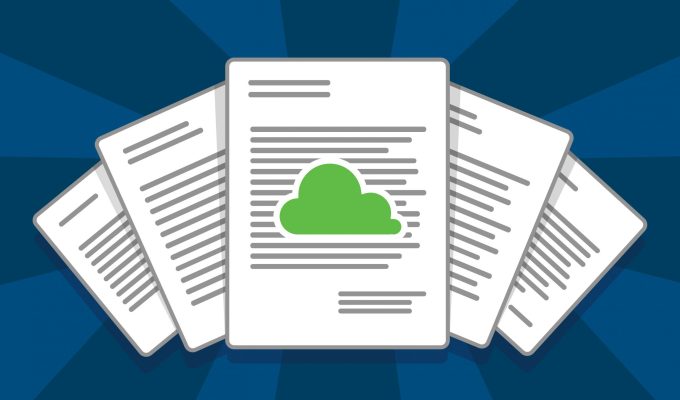Advantages And Benefits Of Cloud Computing
Eight reasons to consider a move to the cloud.
If you’re reading this, there’s a good chance you’re considering a cloud-based solution for your company. Of course, you still want to know if it’s worth the investment. The good news is that the advantages and benefits of cloud computing are many, and in fact most companies have a lot to gain from making a leap to the cloud.
1. A move to the cloud also means an upgrade to your security.
Many people fear that they are losing security with a move to the cloud when in fact it is quite the opposite. If you work with a reputable cloud services provider, they can offer enterprise class security as part of their solution. Their services are built in world class, highly secure datacenters with protections in place that most companies can’t build out locally. Their reputation depends on the ability to keep your data secure in their systems, so they have strict policies around access controls and data encryption that you benefit from just by using their service.
Beyond the physical and foundational security that they can provide as part of their infrastructure and policies, solutions like Microsoft 365 are able to provide technologies such as data loss prevention (DLP), identity and access management (IAM), conditional access, multi-factor authentication, and so on as part of their platform. Because these are built at scale as part of their global platform their customers can take advantage of them at very affordable rates where they may not have been able to justify the cost of implementing them locally.
2. Compliance is built in.
Nearly every company has sensitive data that is protected by some regulation or compliance requirement, and some companies are in highly regulated industries such as finance or healthcare. You may think that those compliance requirements prevent you from moving to cloud based solutions, but if you work with a partner to help pick the right provider the compliance is built into their solutions.
Cloud based providers will take the extra step of having their solution and their environment regularly audited to maintain compliance certifications to comply with their customer requirements. That means that their solution likely has more compliance certifications than you would maintain in a local datacenter when keeping your systems on premise. All you need to do is make sure that your usage of their solution stays in line with those parts of the regulations and compliance requirements. Then when it comes time for your annual audit the cloud solution provider can participate by providing their certifications making your job a lot easier.
3. You get to offload time consuming administrative tasks.
Cloud environments work on what is called the “shared responsibility model”. That means that the cloud provider is responsible for some elements, and you are responsible for others. This works on a sliding scale depending on the type of cloud solution you are looking at. On one end of the scale are Infrastructure-as-a-Service (IaaS) solutions where you are basically purchasing compute power in the cloud to run your own servers, and on the other end are Software-as-a-Service (SaaS) solutions where you are purchasing licenses to use their software solution through the cloud.
In the IaaS model the solution provider is responsible for things such as network hardware and connectivity at their datacenter, servers and compute hardware, virtualization, and environmental controls like HVAC and power. Your responsibility starts at the server operating system, the maintenance and patching of that system, and the applications that run on it. This saves you the time and expense of maintaining all of that underlying infrastructure, and allows you to just focus on your systems and functions that have value to your business.
In a SaaS model the provider is taking responsibility not just of the underlying infrastructure, but also the servers that their software runs on, the maintenance and management of those operating systems, the software itself, and the data in their systems including protecting and backing it up. All you have to worry about is your ability to connect to the Internet so that you can access their software. This shifts all the time and expense for daily monitoring, management, and administrative tasks to the provider, and you focus on doing business.
4. You are always up to date.
This one is closely tied to the previous three points, but worthy of being called out separately. Keeping your systems, software, and security solutions updated is extremely important for security and stability, but it is also time consuming and costly. When you consider the software licensing, patch management tools, and administrative time spent keeping systems up-to-date it adds up to a expensive piece of managing your own infrastructure, not to mention the time spent distracted from more productive and valuable tasks.
When you run with a cloud-based software solution like Microsoft Office 365, you’ll be kept up-to-date with the latest version, ensuring that your software is current with the latest patches, bug fixes, and security updates. Even when you look at hosted IaaS solutions like Microsoft Azure where you are responsible for updating your servers all of the updates for the underlying virtual hosts and network firmware are handled for you.
5. You’ll be able to provide a better employee experience.
It is very difficult to attract and retain the right talent in today’s job market. Companies need to leverage every advantage they can to land the top candidates, and the right technology can play a major role. According to The Future Workforce a recent study showed that 2 in 5 employees would quit their jobs over poor workplace technology. That is 40% of your employees that would leave if they didn’t have the right tools to do their job, so chances are that the person you are interviewing is looking for the right technology and the right workplace experience before accepting your offer.
A study published by IDC stated that 61% of workers find it difficult to collaborate with colleagues and SisInternacional found that on average employees spend 3.5 hours/week waiting for information from others. Statistics like that show that a lot of employees are likely frustrated and not as productive as they could be. Moving away from legacy on premises systems like mapped drives to file servers and email to a more collaborative cloud environment will improve not only the employee experience, but also improve productivity. Utilizing solutions that provide easier paths for communication such as instant messaging and presence can improve collaboration. Most cloud collaboration platforms solutions also include vastly improved file systems that make it easier for users to share and collaborate on a document without emailing around multiple copies and versions, and provide access to their data from anywhere.
Another benefit of moving to the cloud is the ability to provide a flexible workplace. In the wake of the pandemic companies are realizing that they need to be prepared to have their employees work from home. Sometimes it is forced by a situation like a pandemic or a natural disaster, and sometimes it is what their employees are requesting. Polls show that a significant percent of the workforce either prefers to move to a hybrid work environment where they have the flexibility to be in the office or work from home, or they prefer to work from home all the time. For many companies the ability to provide that flexibility for their employees while keeping them highly engaged and productive will be a differentiator for them when it comes to retaining their current employees and hiring new team members. Making your systems available from the cloud so that work and collaboration is seamless regardless of location is a key step in creating a modern workplace.
6. The modern amenities of the cloud help you provide a better customer experience.
The ability to provide the right customer experience can be the differentiator that helps you stand out, and the inability to provide it can be the anchor that is holding you back. Customer experience is not just about how clean your store is or how friendly your employees are. Those are both important, but often it is about how easy it is to do business with you.
Moving to the cloud opens a lot of possibilities for collaboration and communication with your customers and partners, as well as additional services that you can provide for them. Many cloud solutions have end customer facing solutions and portals built right into them providing the ability to check their account or order, or collaborate with you in real time. Solutions like Microsoft 365 include business intelligence tools like Power BI making it easy to expose critical information and customized reports right to your clients.
Securing your customer experience is just as important as making it available to your customers. Just like the extra security you experience when logging into your bank online makes your feel better about working with them, your customers want to have that same piece of mind when working with you. All the top cloud solution providers incorporate that same type of security into their solutions whether it is internally for your access or externally for your customer’s access.
Another piece of the customer experience is your ability to respond quickly to fulfill their request, and picking the right cloud platform can make a major impact. With legacy on premises systems it was often complicated and expensive to build any integrations between them or to automate any part of your processes. Centralizing your data and systems on the right cloud platform can make that integration and automation process much easier and more cost effective. Combining that with improved communication and collaboration with your customers can significantly improve response times and the overall experience.
7. Your company can save money and reduce unnecessary expenses.
We mentioned it before, but it warrants repeating. Maintaining your own servers, your own software, and having the resources available for their upkeep can be incredibly costly. With a cloud solution, this is all shifted to a team of professionals off-site, freeing up resources and valuable space at your company’s physical location.
That is not the only cost savings that cloud solutions can offer. When building on premise solutions through a large capital expenditure for hardware those systems are sized not just to handle the current load, but also the possible future load over the next 5 years while the hardware is depreciated. This leads to idle resources that are sitting unused for months or years at a time. In cloud computing the thought processed is reversed. You only pay for exactly what resources you need at the time you need them. The systems are easily scaled so they can grow with you or reduce in size during periods of low activity. Many systems can be configured to automatically scale up or down in size based on the current load allowing you to manage your expenses more effectively.
8. Your data can be backed up and recovered in the case of an unexpected disaster.
With cloud-based backup and disaster recovery services, your company doesn’t have to start over from square one in a worst-case scenario. Over the years, we’ve seen businesses of all sizes benefit from managed backup and disaster recovery solutions. While you never want to have to use it, you can always rest assured knowing your data is safe in the event of a crisis.
This includes backing up on premises solutions to cloud-based solutions, as well moving to cloud based solutions with disaster recovery capabilities built in. When utilizing SaaS based solutions the provider has high availability and disaster recovery capabilities built into their service. This allows them to quickly restore service or even seamlessly failover between datacenters should a disaster occur. Likewise, when designing an IaaS environment for your systems you can easily include disaster recovery capabilities at a fraction of the cost of building out a similar solution on premises.
Common concerns about cloud hosting.
Of course, it’s understandable that, despite the benefits, some professionals still have their reservations about managed cloud solutions. Concerns with downtime, security, privacy, costs, control, flexibility, and vulnerability to attacks are completely understandable.
That’s why we strongly recommend consulting with a cloud solutions expert before you make your decision. The right cloud solutions provider can also deliver solutions to these issues, along with the benefits and advantages discussed earlier. While it may seem like a lot to take in, an expert in the cloud computing space can help clear the air and put your company on the right track.


